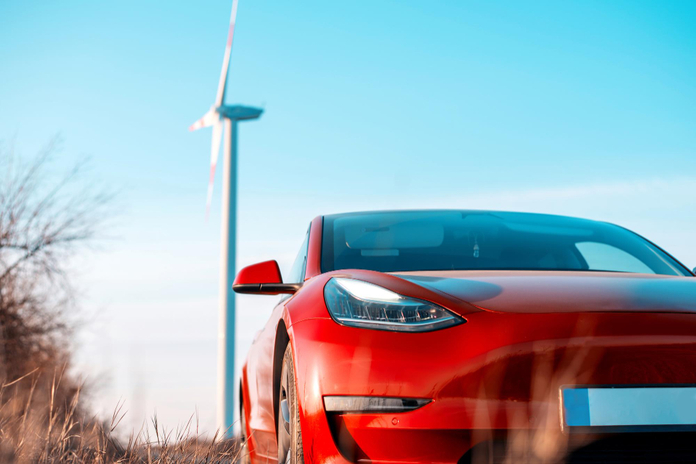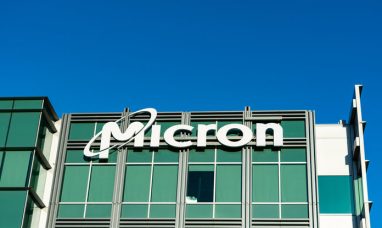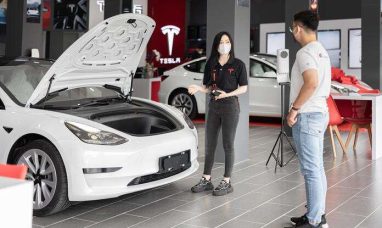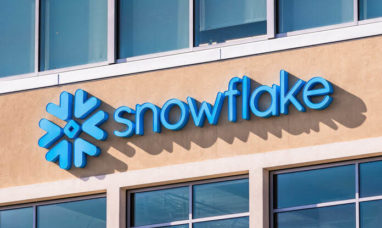Tesla Inc. (NASDAQ:TSLA) recently reported its first-ever annual decline in vehicle deliveries, raising questions among investors about the company’s future performance. Once a dominant force in the electric vehicle (EV) market, Tesla’s latest delivery numbers have sparked concerns about whether the company can maintain its growth trajectory. However, despite the dip in deliveries, Tesla stock has been on an upward trend, leaving investors wondering whether it’s time to buy the dip or sell their shares.
Tesla’s 2024 Delivery Decline
Tesla reported 1.79 million vehicle deliveries for 2024, a 1.1% decrease from the previous year. This figure fell short of analysts’ expectations of 1.806 million units, as per LSEG data. While Tesla remains ahead of its Chinese competitor BYD Company Ltd. (OTC:BYDDY), which delivered 1.77 million vehicles, BYD recorded a 12.1% annual growth, unlike Tesla’s decline.
The drop in deliveries has led some investors to question whether Tesla’s dominance in the EV market is waning. However, a closer look at the company’s recent performance suggests there are reasons for optimism.
Tesla’s Q3 Comeback
After four consecutive quarters of missing earnings estimates, Tesla surprised Wall Street in the third quarter of 2024 with strong results. The company reported Q3 revenues of $25.2 billion, an 8% year-over-year increase. Key segments saw notable growth:
Automotive revenue rose 2% to $20 billion.
Energy Generation and Storage surged 52% to $2.4 billion.
Services and Other grew 29% to $2.8 billion.
Tesla’s adjusted earnings per share (EPS) rose to $0.72, significantly beating the consensus estimate of $0.59. The company also demonstrated strong cash flow, with net cash from operating activities nearly doubling year-over-year to $6.26 billion and free cash flow soaring 223% to $2.7 billion.
Tesla’s stock price saw its best single-day increase in over a decade following these results, driven by improved operational metrics. Production and deliveries rose in Q3, with production up 9% year-over-year to 469,796 vehicles and deliveries increasing 6% to 462,890 vehicles. Additionally, the number of Tesla Supercharger stations grew to 6,706, reflecting the company’s ongoing efforts to expand its charging infrastructure.
Beyond Automotive: Tesla’s Broader Ecosystem
Tesla is more than just a car company. The company is building an advanced global ecosystem that includes energy solutions, autonomous driving technology, and robotics. These additional segments could play a crucial role in Tesla’s future growth.
Energy Storage: Tesla is expanding its energy business with products like solar panels and Megapacks. New facilities in Shanghai and Texas are expected to boost production capacity.
Autonomous Driving: Tesla’s Full Self-Driving (FSD) software is a key focus for the company. The anticipated release of FSD V13.2 is expected to bring significant improvements in autonomous driving capabilities. Tesla claims that this version is 500% more capable than its predecessor.
Robotaxi and Cybercab: Tesla aims to revolutionize urban mobility with its Cybercab, a pedal- and wheel-free robotaxi. Production is targeted for 2026, with a goal of producing 2 million Cybercabs annually. However, as seen with previous launches, delays could impact these timelines.
Robotics: Tesla’s humanoid robot, Optimus, is already in use at Tesla factories. Using the same data-driven learning approach as FSD, Optimus has the potential to transform various industries, further positioning Tesla as a leader in AI and robotics.
Financial Strength and Market Position
Tesla’s financial health remains strong. The company ended Q3 with a cash balance of $33.6 billion, far exceeding its short-term debt of $2.3 billion. This financial stability allows Tesla to invest in new technologies and expand its global footprint.
Tesla continues to dominate the U.S. EV market, holding a 51% market share by the end of 2023. The company’s ambitious goal of selling 20 million vehicles annually by 2030 remains in place, with a projected 20%-30% vehicle growth rate for 2025.
Analyst Sentiment on Tesla Stock
Despite concerns about delivery declines, analysts remain cautiously optimistic about Tesla stock. The consensus rating is “Hold,” with a high target price of $515, representing a potential upside of 25.3% from current levels. Out of 37 analysts covering Tesla, 12 have issued “Strong Buy” ratings, two have given “Moderate Buy” ratings, 14 have rated it as a “Hold,” and nine have assigned a “Strong Sell” rating.
Conclusion: Buy the Dip or Sell Tesla Stock?
Tesla’s recent delivery decline is a notable development, but the company’s strong financial performance and expansion into new markets suggest that it remains a formidable player in the EV industry. The stock’s impressive performance over the past year indicates that investors still have confidence in Tesla’s long-term potential.
For investors, the decision to buy or sell Tesla stock depends on their risk tolerance and belief in the company’s ability to execute its ambitious plans. With continued innovation in autonomous driving, energy storage, and robotics, Tesla is well-positioned to remain a leader in the evolving automotive and technology landscapes.
Featured Image: Freepik









